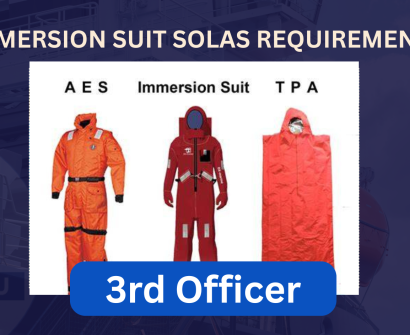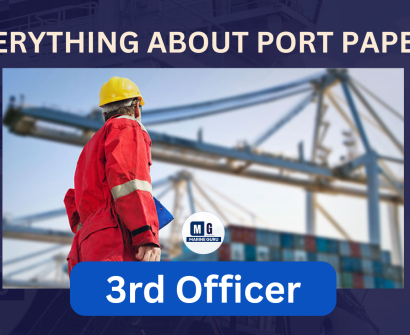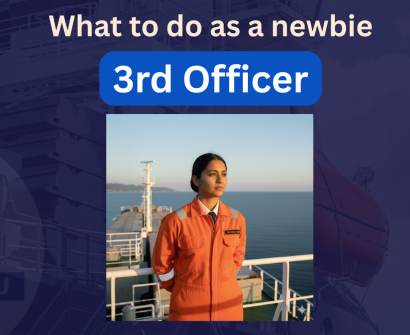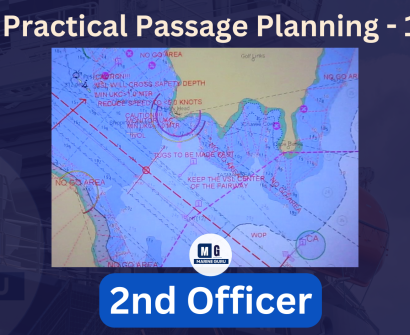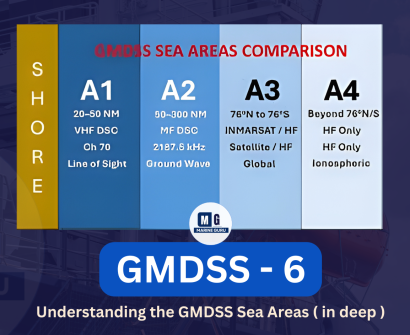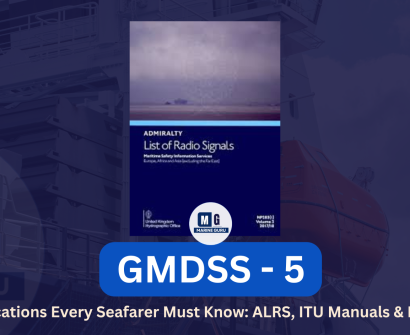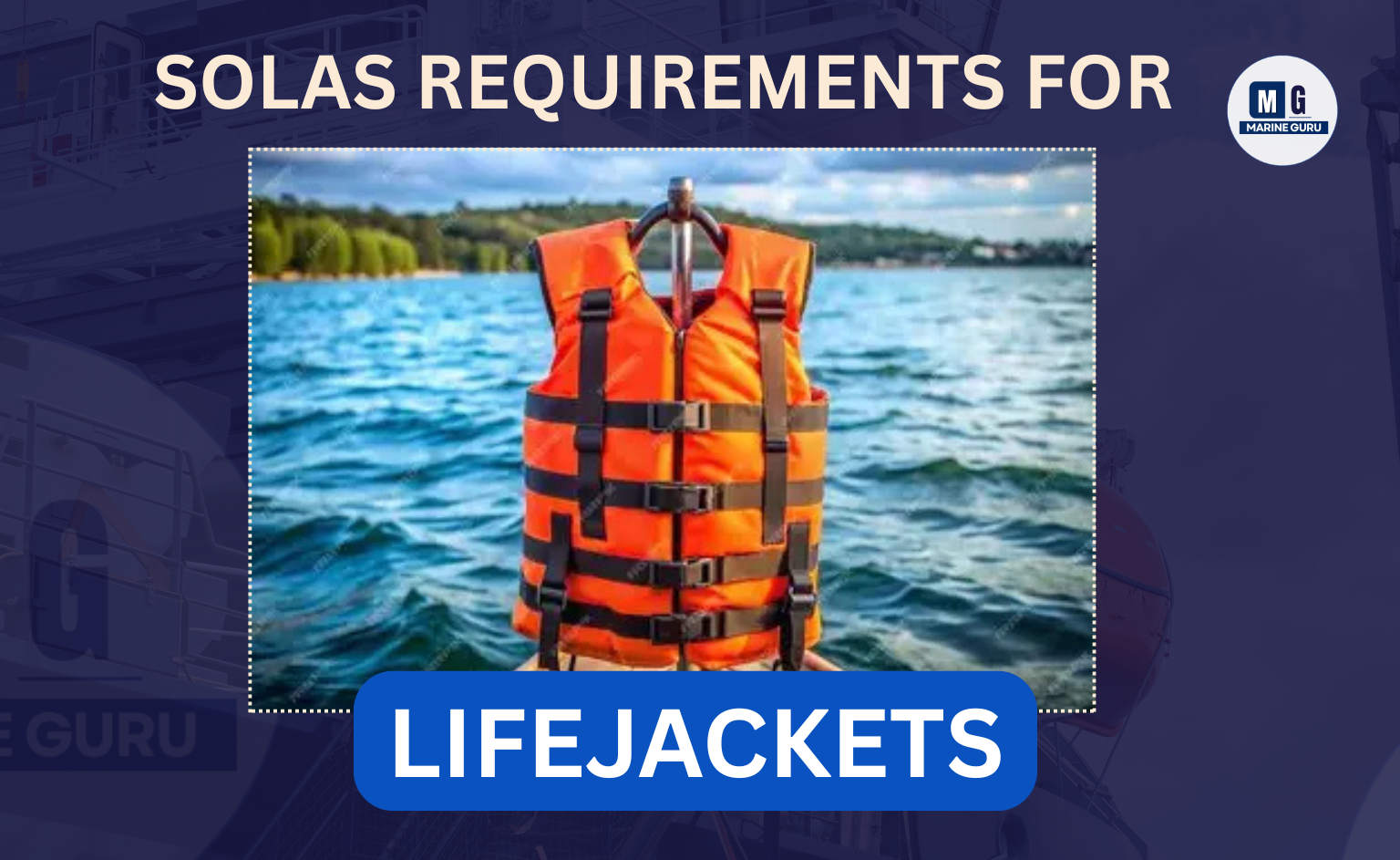
When you step on board a ship, one of the first pieces of safety equipment you’ll notice is the bright orange lifejacket. But have you ever wondered — what exactly makes it SOLAS-approved?
Or why certain jackets have whistles, lights, or even special straps?
Let’s decode that together — because a lifejacket isn’t just a piece of foam.
It’s the single piece of gear that can turn chaos into survival at sea.
What Is a Lifejacket and Why Is It Important?
Imagine this: you fall overboard at night. The sea is pitch dark, cold, and choppy.
The only thing between you and danger is your lifejacket — designed to keep your head above water and your mouth and nose safely out of it.
A lifejacket is worn over the upper body like a vest. It’s built with buoyant material or inflatable chambers that automatically turn the wearer face-up, preventing drowning even if unconscious.
Each SOLAS-approved lifejacket includes:
- A whistle (usually on the left side) — to call for help.
- A water-activated light — visible for up to 8 hours, glowing with the intensity of one candle.
- Adjustable straps and a collar tie — to secure the jacket properly.
How to Don (Wear) a Lifejacket Correctly
In an emergency, seconds matter. Here’s how you should wear it step by step:
- Slip it over your head — ensure the front faces outward.
- Pass the straps around your waist, tighten firmly.
- Secure the front buckle and tie the collar straps.
- Use the whistle to attract attention and check your light.
⚠️ If jumping into water:
- Support the lifejacket with your left hand on your right shoulder.
- Pinch your nose and close your mouth.
- Keep feet together and jump straight, avoiding hitting water face-first.
Every crew member should practice donning during drills to ensure confidence during real emergencies.
Lifejacket Requirements as per SOLAS Regulation
The International Convention for the Safety of Life at Sea (SOLAS) lays out specific rules under Chapter III, Part B, Regulation 7.
Let’s break it down simply:
1. For Every Person on Board
Each ship must carry a lifejacket for every person on board that complies with LSA Code 2.2.1 or 2.2.2.
2. For Infants and Children
- For voyages less than 24 hours — lifejackets for infants = at least 2.5% of passengers.
- For voyages over 24 hours — one infant lifejacket per infant.
- For children — at least 10% of total passengers or enough for each child on board.
3. For Crew on Watch
Extra lifejackets must be kept:
- On the Bridge
- In the Engine Control Room
- At manned watch stations
4. For Heavy or Large Persons
If standard lifejackets don’t fit those over 140 kg or with chest size over 1750 mm, special accessories (like extension straps) must be available.
5. Accessibility and Placement
Lifejackets should be readily accessible, their locations clearly marked, and easy to grab even in darkness or panic.
Lifejackets on Lifeboats
- In totally enclosed lifeboats, lifejackets must not block entry or seatbelts.
- For free-fall lifeboats, lifejackets must not interfere with launching or passenger safety.
Lifejacket Lights – SOLAS Regulation 32
Each lifejacket must be fitted with a lifejacket light that complies with LSA Code 2.2.3:
- Must emit at least 0.75 candelas of white light.
- Flash 50–70 times per minute.
- Remain visible for at least 8 hours.
- Include a manual switch and activate automatically in water.
This ensures visibility even in rough, night-time rescues.
LSA Code Requirements Explained
Now, let’s dive deeper into the Life-Saving Appliances (LSA) Code, which SOLAS refers to for detailed construction and performance standards.
LSA Code 2.2.1 — General Requirements
A SOLAS-approved lifejacket must:
- Resist fire: Should not burn or melt after being exposed to fire for 2 seconds.
- Be available in 3 sizes: Infant, Child, and Adult.
- Be marked clearly: By weight and/or height ranges.
Size Categories:
| Type | Weight (kg) | Height (cm) |
|---|---|---|
| Infant | < 15 | < 100 |
| Child | 15–43 | 100–155 |
| Adult | > 43 | > 155 |
Usability Standards:
- 75% of untrained persons must correctly wear it within 1 minute.
- Must be comfortable and cannot be worn incorrectly.
- Allows jumping from 4.5 meters without injury or displacement.
- Must float the wearer face-up and allow short-distance swimming.
Each lifejacket must also include:
- A whistle
- Light attachment point
- Buoyant line for linking with others
- Lifting loop for rescuers to hoist the wearer from water.
LSA Code 2.2.2 — Inflatable Lifejackets
Inflatable types must:
- Have at least two separate air chambers.
- Inflate automatically when in contact with water.
- Have a manual inflation system (pull cord).
- Allow oral inflation for both chambers.
These are common in compact ships or offshore setups due to their lightness and comfort.
LSA Code 2.2.3 — Lifejacket Lights
Each light must:
- Be white in color.
- Provide 0.75 candela intensity for 8+ hours.
- Flash 50–70 times per minute.
- Be visible from any upper hemisphere angle.
Together with the whistle, these features maximize visibility and survival chances during night rescues.
Key Takeaways
- Always inspect your lifejacket’s light and whistle weekly.
- Keep spare batteries and replacement straps onboard.
- Never stow lifejackets under heavy items — they must be instantly accessible.
- Practice donning blindfolded — in real distress, visibility is often near zero.
Life Saving Appliances (LSA) under 3rd Officer:
* Lifeboats (enclosed, rescue boats) and launching arrangements
* Liferafts and their hydrostatic release units
* Lifebuoys (with lights, smoke signals, and lifelines)
* Lifejackets (with lights and whistles) for all persons on board
* Immersion suits and thermal protective aids
* Emergency Position Indicating Radio Beacons (EPIRBs) and Search and Rescue Transponders (SARTs)
* Rocket parachute flares, hand flares, and buoyant smoke signals
* Line throwing appliances
* Muster list and SOLAS/LSA/Fire safety training manuals and posters
* Spare batteries, bulbs, and supporting inventory for LSA
Fire Fighting Appliances (FFA) under 3rd Officer
* Fire extinguishers (of all types) throughout accommodation and deck areas
* Fire hoses, hydrants, and nozzles
* Fireman’s outfits (protective clothing, boots, helmets, gloves)
* Self-contained breathing apparatus (SCBA) sets
* Fire blankets and sand buckets
* Fire alarms and detection systems
* Fire main and emergency fire pumps
* Fixed firefighting systems (CO2, foam, water mist, dry powder, etc.)
* Emergency escape breathing devices (EEBD)
* Portable and fixed communication equipment used in fire emergencies
Additional Responsibilities
* Keeping LSA/FFA inspection and maintenance records up to date (PMS)
* Training and familiarizing crew with the use of all equipment
* Ensuring LSA/FFA manuals, posters, and muster lists are current and correctly displayed
* Planning inventory needs and raising requisitions for expiring items/spares
* Reporting deficiencies and planning for shore-based inspections or servicing as required

Frequently Asked Questions (FAQs)
Q1. How often should lifejackets be inspected?
As per SOLAS, lifejackets should be visually inspected monthly and annually by an authorized technician.
Q2. What’s the main difference between SOLAS and non-SOLAS lifejackets?
SOLAS lifejackets guarantee face-up flotation even if the wearer is unconscious; non-SOLAS types are meant for recreational or inland water use.
Q3. What’s the minimum buoyancy required?
Typically 150 Newtons for adults under SOLAS regulations.
Q4. Can children wear adult lifejackets?
No. SOLAS mandates separate child and infant categories due to differences in body proportions and buoyancy needs.
Q5. Why do some lifejackets have double lights?
Some models include both steady and flashing lights for better visibility in search operations.
Q6. Do inflatable lifejackets need servicing?
Yes. They must be serviced every year, ensuring CO₂ cylinders and inflators are functional.


